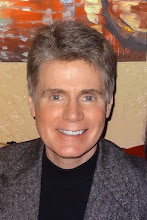Brandon_4_Q
Chapter four tells us a lot about the type of language that we use, the gestures we use, facial expressions, body language, timing, tone and how to make convince listeners to hear our story.
However, the chapter does not touch on the form/process of a story. Are there not typical processes to a story that occur that good stories seem to follow? For example, on a basic level, should the “punch line” of the story come at the end of the story or at the beginning?
Let’s look at the stories of comedians. The “punch line” usually comes at the end, right? The part that makes people laugh is at the end of the story. Everything before the “punch line” is what convinces the people to listen to the story.
Is there a process that a story must follow for it to be engaging? Or can all elements of a story simply be in the message in an effort to get the same idea across?
Labels: Brandon


3 Comments:
Well, to be pointlessly nitpicky, the punchline isn't always what makes the joke funny. The most obvious example would be the Aristocrats joke.
Touche.
That's an interesting point. My first thought is the movie Memento. (If anyone hasn't seen it, it starts with a "revenge" killing, and then the scenes play in reverse chronicalogical order.)
Memento is told in reverse order, so the final act of the main character isn't the climax, (or "punchline", if you will.)
In the "extra special limited release director's cut" DVD version there is apparently a way to watch the movie in chronicalogical order. I haven't watched it with this in mind, but it would be interesting to see how the story unfolds in reverse, and if the structure works forward and backward.
Post a Comment
<< Home